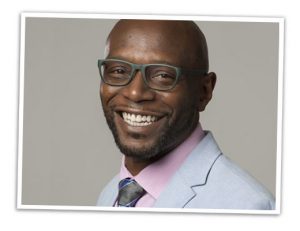Sign up for our monthly Leap Update newsletter and announcements from the Leap Ambassadors Community:
By clicking "Stay Connected" you agree to the Privacy Policy
By clicking "Stay Connected" you agree to the Privacy Policy
Performance Practice for New Leaders
Taking the helm at a nonprofit can be overwhelming. Here’s how two new leaders used the Performance Practice (formerly PIOSA) to help get up to speed faster and get better at “getting better” almost immediately.
As a new leader, you’re juggling lots of duties—from taking the board’s pulse and grasping program operations and goals, to understanding staff dynamics, the financial position, and organizational culture. It can be overwhelming for even the most seasoned executives. If it’s your first time ever leading an organization, it can be downright daunting. How can the Performance Practice (formerly PIOSA) guide your learning and help you leap into leadership?
 When Amanda Squibb became executive director of the Klamath Basin, Oregon, chapter of Friends of the Children in January 2017, many parts of the job were brand new territory. The pressure of meeting the expectations of a highly respected organization’s board, staff, and stakeholders—and ensuring children’s futures—weighed heavily.
When Amanda Squibb became executive director of the Klamath Basin, Oregon, chapter of Friends of the Children in January 2017, many parts of the job were brand new territory. The pressure of meeting the expectations of a highly respected organization’s board, staff, and stakeholders—and ensuring children’s futures—weighed heavily.
Friends President Terri Sorensen introduced her to the Performance Practice. “At first, it looked intimidating, but it turned out to be a great tool to help me dive into the inner workings of the organization and identify areas of strength and deficit,” Amanda said. She started by simply reviewing the principles and proof points in several modules, and found the Leadership module particularly helpful in working with her board. “The Performance Practice gave me a jumpstart, because it inspired me to ask questions I otherwise might not have asked for a really long time.”
Why, for example, was board engagement low? Did she and board members have different views of their respective roles? Thinking about the proof points in the Performance Practice drove home her responsibility to proactively develop relationships that would let them work toward the best possible results for the children they served—together.
 Kevin Jones joined the Washington-based Urban Coalition of HIV/AIDS Prevention Services (UCHAPS) as executive director in mid-2017. As a first-time executive director, he wanted to start off on the right foot with the board. In particular, he wanted to signal his commitment to organizational high performance from the get-go.
Kevin Jones joined the Washington-based Urban Coalition of HIV/AIDS Prevention Services (UCHAPS) as executive director in mid-2017. As a first-time executive director, he wanted to start off on the right foot with the board. In particular, he wanted to signal his commitment to organizational high performance from the get-go.
Kevin had used the Performance Practice in his previous job and knew it could serve as a good discussion guide. So he proposed that everyone on the board complete and discuss the Performance Practice module on Courageous, Adaptive Executive and Board Leadership as a way to frame their collective process for getting to know each other, clarifying their respective roles, and developing a collaborative and constructive working relationship. “What I like best about the Performance Practice is that it’s non-judgmental and opens the door for candid conversations. It helped us discuss organizational strengths and weaknesses openly and honestly,” Kevin said.
Amanda chose a different approach after observing that her board was struggling with meeting attendance. As she used the Performance Practice as a personal study guide and foundation for developing her own leadership style and approaches, she thought about possible reasons for low board engagement—and ideas for engaging members more effectively. In individual conversations with all board members, she learned that they wanted a closer connection to the mission and to know more specifics about how young people fared as a result of services. They also wanted more practical ways to engage.
So, Amanda introduced more hands-on opportunities for helping, from replacing broken windows to finding community volunteers to meet specific youth needs. The board embraced them. She also began sharing a quarterly dashboard report that compares different Friends chapters on key indicators, including board engagement. Selected parts of the Performance Practice Module on Courageous, Adaptive Executive and Board Leadership helped spark conversation about the dashboard.
The Performance Practice gave me a jumpstart, because it inspired me to ask questions I otherwise might not have asked for a really long time.
—Amanda Squibb
Executive Director
Friends of the Children – Klamath Basin
The comparative data from the network dashboard lit a fire under the board. They didn’t like falling short in comparison to others (e.g., meeting attendance percentages). They wanted to do better, and soon, they did: At the time of this writing, the board attendance rate had increased from 65% in FY 2017 to 77% in FY 2018.
In addition to building an effective relationships with the board, Kevin wanted to get to know UCHAPS staff and the organization better (without making anyone feel threatened), build the team, and reflect together on the organization’s direction. He asked all staff to complete the Performance Practice module on Well-Designed and Well-Implemented Programs.
The responses laid the foundation for difficult but non-threatening conversations with individual staff and group discussions around themes that evolved from the team’s individual responses. Kevin learned that previous leaders hadn’t shared logic models, work plans, funder information, and other tasks the agency committed to do with staff. The conversations led to a desire to do more and do things differently. He said, “The Performance Practice was the key to tapping into the individual passions of staff and what they were willing to do to lift up the mission in the community.”
What I like best about the Performance Practice is that it’s non-judgmental and opens the door for candid conversations. It helped us discuss organizational strengths and weaknesses openly and honestly.
—Kevin Jones
Former Executive Director
UCHAPS
Kevin decided to make sure staff had access to more relevant information than they had in the past and promoted them from coordinators to program managers, with increased responsibilities and expectations. He quickly saw an increase in productivity and greater ownership of their work, and staff members reported feeling more connected to the organization and mission. The freedom to innovate seemed to bolster their commitment.
Amanda and Kevin initially focused on Performance Practice leadership and programs modules, but—by engaging in reflection, dialogue, and mutual learning with their boards and staff—they modeled curiosity and a strong commitment to high performance, important steps in building a culture of learning.
Whether you’re a brand new leader or one who’s been at it for a long time, let the Performance Practice be your springboard to high performance.
Interested in making sure you ask the right questions, like Amanda did? Check out links to the Performance Practice module Intro pages. And if you want staff or board to complete a Performance Practice module to spark conversation, build relationships, and chart the way forward together, like Kevin did, explore the Get Started pages.
Last Updated: September 26, 2018
This document, developed collaboratively by the Leap of Reason Ambassadors Community (LAC), is licensed under a Creative Commons Attribution-NoDerivatives 4.0 International License. We encourage and grant permission for the distribution and reproduction of copies of this material in its entirety (with original attribution). Please refer to the Creative Commons link for license terms for unmodified use of LAC documents.
Because we recognize, however that certain situations call for modified uses (adaptations or derivatives), we offer permissions beyond the scope of this license (the “CC Plus Permissions”). The CC Plus Permissions are defined as follows:
You may adapt or make derivatives (e.g., remixes, excerpts, or translations) of this document, so long as they do not, in the reasonable discretion of the Leap of Reason Ambassadors Community, alter or misconstrue the document’s meaning or intent. The adapted or derivative work is to be licensed under a Creative Commons Attribution-NoDerivatives 4.0 International License, conveyed at no cost (or the cost of reproduction,) and used in a manner consistent with the purpose of the Leap of Reason Ambassadors Community, with the integrity and quality of the original material to be maintained, and its use to not adversely reflect on the reputation of the Leap of Reason Ambassadors Community.
Attribution is to be in the following formats:
“From ‘Performance in Action: Performance Practice for New Leaders, “Springboard to High Performance”,’ developed collaboratively by the Leap of Reason Ambassadors Community, licensed under CC BY ND https://creativecommons.org/licenses/by-nd/4.0/. For more information or to view the original product, visit https://leapambassadors.org/performance-articles/performance-practice-for-new-leaders/.”
The above is consistent with Creative Commons License restrictions that require “appropriate credit” be required and the “name of the creator and attribution parties, a copyright notice, a license notice, a disclaimer notice and a link to the original material” be included.
The Leap of Reason Ambassadors Community may revoke the additional permissions described above at any time. For questions about copyright issues or special requests for use beyond the scope of this license, please email us at info@leapambassadors.org.
We use cookies for a number of reasons, such as keeping our site reliable and secure, personalising content and providing social media features and to analyse how our site is used.
Accept & Continue